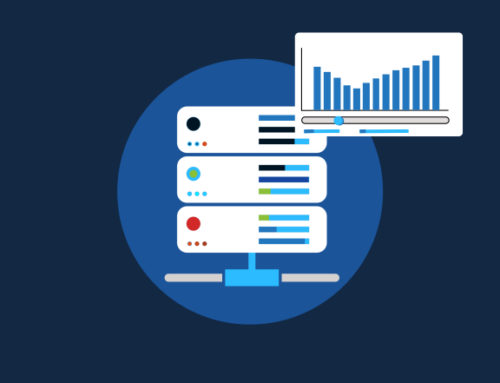The telecommunications industry demands seamless and efficient network operations, making network optimization a mission-critical imperative for Internet Service Providers (ISPs). In this era of constant connectivity, even the smallest network disruptions can have far-reaching consequences, from customer dissatisfaction to economic losses. It is within this context that predictive analytics emerges as a powerful ally, enabling ISPs to foresee and mitigate network issues before they can disrupt services.
This blog will discuss predictive analytics in the telecommunication sector, providing a glimpse into the profound transformation it can bring to network management. We’ll explore how predictive analytics empowers ISPs to not only anticipate potential network problems but also proactively address them, ultimately ensuring the uninterrupted delivery of high-quality services and customer satisfaction.
Anticipating Network Issues with Predictive Analysis
Predictive analytics presents a groundbreaking solution to this predicament. By harnessing the power of big data, machine learning, and artificial intelligence, ISPs can transition from a reactive stance to a proactive one. Predictive analytics analyzes vast amounts of historical and real-time network data to identify subtle patterns, anomalies, and potential issues before they fully materialize. This allows ISPs to intervene early, taking preventive measures to mitigate or even avert network disruptions.
Incorporating predictive analytics means ISPs can anticipate the overheating server before it crashes, spot unusual data traffic that might indicate a cyberattack in progress, and proactively allocate resources to handle anticipated surges in demand. This not only leads to increased network reliability and customer satisfaction but also enables ISPs to optimize their operations and resources effectively, ultimately boosting their bottom line. In essence, predictive analytics empowers ISPs to stay one step ahead in the complex and highly competitive world of telecommunications.
Proactive Network Issue Resolution
Predictive analytics revolutionizes this approach by enabling ISPs to adopt a proactive stance. Instead of waiting for network issues to affect users, predictive analytics empowers ISPs to foresee these problems before they have a significant impact. By continuously monitoring network performance and analyzing historical data, predictive analytics can identify subtle deviations, anomalies, and trends that might indicate impending issues.
Numerous real-world examples illustrate the benefits of proactive network management through predictive analytics. ISPs employing these techniques have reported reduced downtime, improved network reliability, and higher customer satisfaction levels. They can address issues in a planned and timely manner, often preventing them from escalating into larger, more costly problems. By anticipating and resolving network issues proactively, ISPs not only enhance their reputation and customer retention but also save on operational and support costs.
Predictive Analysis Tools and Techniques
A wide array of predictive analysis tools is available for ISPs to choose from, and the selection should be driven by their specific requirements and the scale of their operations. These tools can range from open-source software to specialized commercial solutions. They should provide capabilities for data preprocessing, statistical analysis, and machine learning. ISPs can aggregate data from diverse sources, including network performance metrics, customer behavior data, and historical records of network issues. This data forms the foundation for predictive modeling and analysis. Data sources should be well-defined and structured, ensuring that they are reliable, accurate, and up-to-date.
Machine learning and artificial intelligence (AI) play a pivotal role in predictive network management. These technologies enable ISPs to develop and deploy predictive models that can detect subtle patterns, anomalies, and trends in the data. Machine learning algorithms can identify network issues in real-time, anticipate potential problems, and even suggest appropriate proactive measures. AI can help improve the precision of predictive models and automate decision-making processes, such as resource allocation and network adjustments.
Implementing Predictive Analysis in ISP Operations
Understanding how to integrate predictive analytics involves defining clear objectives, such as improving network reliability or reducing downtime. ISPs need to identify the key performance indicators (KPIs) that will be monitored and the specific network issues they aim to predict and address. An essential part of this integration process is selecting the right predictive analytics tools and technologies to match the unique requirements of the ISP.
Data analysts in the implementation process are responsible for collecting, preprocessing, and analyzing the data necessary for predictive modeling. Data analysts play a key role in fine-tuning algorithms and ensuring that predictive models are accurate and efficient. Their expertise can be vital in creating and maintaining a successful predictive analytics solution.
However, the implementation process is not without its challenges and considerations. ISPs need to invest in the necessary technological infrastructure and talent. Data privacy, security, and regulatory compliance must be prioritized, especially when dealing with sensitive customer data. By addressing these challenges and embracing the potential benefits of predictive analytics, ISPs can reshape their network optimization strategies and deliver more reliable, customer-centric services.
As the industry continues to evolve, predictive analytics will play an even more pivotal role, leveraging emerging technologies such as AI, 5G, and IoT to deliver seamless and uninterrupted network services. It empowers ISPs to shift from reactive firefighting to proactive issue anticipation and resolution, ultimately leading to improved network reliability and heightened customer satisfaction. With the proactive power of predictive analytics in their arsenal, ISPs are poised to lead the charge into this bright and promising future of telecommunications.




